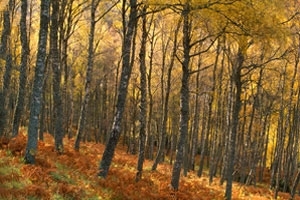 The government has a stated commitment to increase UK tree planting to 30,000 hectares per year by 2025 as part of its strategy to combat climate change and achieve net zero by 2050.
The government has a stated commitment to increase UK tree planting to 30,000 hectares per year by 2025 as part of its strategy to combat climate change and achieve net zero by 2050.
Whilst we recognise that planting trees is an important tool in the drive to offset carbon emissions, the Game & Wildlife Conservation Trust (GWCT) believes that the ‘right tree in the right place’ approach is vital. There are plenty of opportunities for increasing woodland cover in our landscapes that do not require the repurposing of land. For instance, the GWCT has estimated that planting a tree every 20 metres in 58% of English hedgerows would significantly contribute towards the policy target, with the potential to host 14 million trees without repurposing a single acre of land, even allowing for planting strategies that omit open arable landscapes or the rough pastures and meadows of the hill fringe.
In contrast, the proposals put forward by other conservation organisations could result in significant disruption to the ecosystem balance in some areas. For example, the map drawn up by Friends of the Earth and Terra Sulis, which identifies land parcels deemed most suitable for tree planting, show that many of the areas are the rough pastures and meadows of the hill-fringe (e.g. in the North Pennines and Yorkshire Dales). These habitats are of critical importance for red-listed species such as curlew, lapwing, redshank, snipe, grey partridge and black grouse. Many of these species are the subject of international biodiversity obligations.
Focusing only on the relative agricultural productivity of the land misses the point, because these low intensity traditional hill farming areas often foster biodiversity, both flora and fauna. These areas have been identified by Natural England and Forestry Commission in their guidance note ‘Guidance for afforestation proposed on or near nationally important upland breeding wader areas’ as areas to avoid planting, and we support this. For a conservation organisation not to be more aware of the bigger picture when promoting tree planting is concerning.
This shows that an environmental policy initiative that focuses on one aspect of or solution to a desired outcome can be dangerous, as it fails to consider the inter-related, complexities of our landscape. Land management is often the foundation for many of these relationships, and so any change in the management approach should consider the wider impacts as well as the potential benefits of that change.